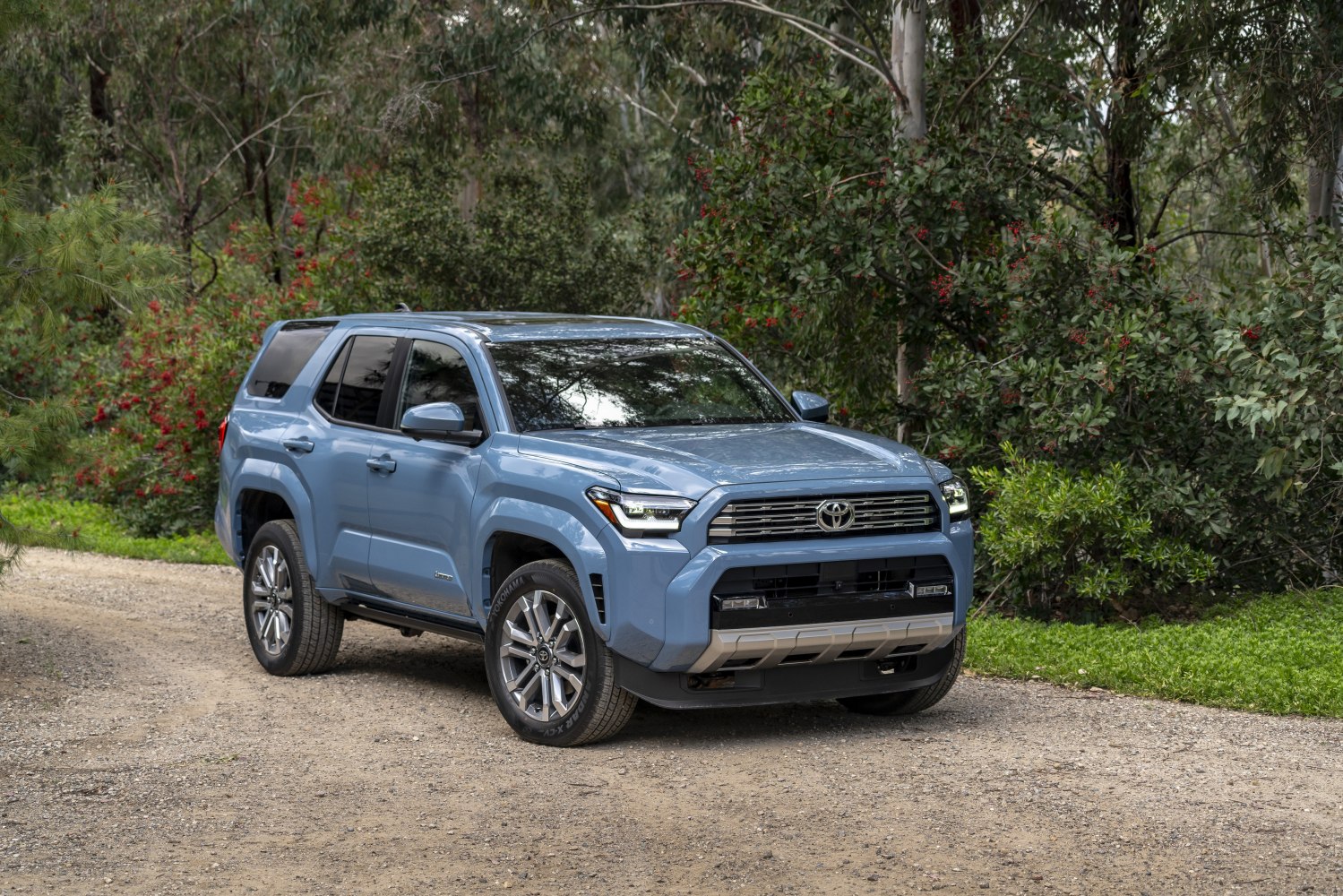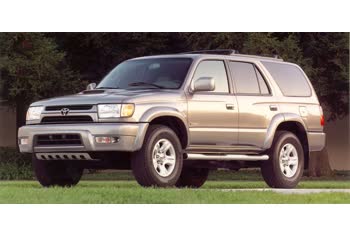Everything you need to know about specifications and performance - Toyota 4Runner 2024 - TRD Pro 2.4 i-FORCE MAX (326 Hp) Hybrid 4WD ECT-i

Overview:
What is the engine capacity of a Toyota 4Runner 2024?
The engine capacity of the Toyota 4Runner 2024 is 2393 cm.
Toyota 4Runner 2024 How many horsepower?
The engine power of the Toyota 4Runner 2024 is FHEV (Full Hybrid Electric Vehicle).
What is the Toyota 4Runner 2024 engine?
Toyota 4Runner 2024 engine is Dynamic Force / T24A-FTS. (Click to see other cars using the same engine)
How powerful is the electrical system in the Toyota 4Runner 2024?
The power of the electrical system in the Toyota 4Runner 2024 is 326 Hp @ 6000 rpm. hp.
How much gasoline does a Toyota 4Runner 2024 consume?
The Toyota 4Runner 2024 consumes 10.2 liters of gasoline per 100 km
General:
Brand: Toyota
Model: 4Runner
Generation: 4Runner VI
Modification (Engine): TRD Pro 2.4 i-FORCE MAX (326 Hp) Hybrid 4WD ECT-i
Start of production: December, 2024
End of production:
Powertrain Architecture: FHEV (Full Hybrid Electric Vehicle)
Body type:Sports Utility Vehicle (SUV)
Seats: 5
Doors: 5
Engine:
Power: FHEV (Full Hybrid Electric Vehicle)
Power per litre: 116.2 hp/l
Torque: 430 nm @ 1700 rpm.
Engine Model/Code:Dynamic Force / T24A-FTS
Engine displacement: 2393 cm
Number of cylinders: 4
Engine configuration: Inline
Number of valves per cylinder: 4
Fuel injection system: Direct injection and Multi-port manifold injection
Engine aspiration: Twin-scroll turbo, Intercooler
Valvetrain: DOHC, Dual VVT-i
Engine oil capacity: 5.6 l
Engine layout: Front, Longitudinal
Cylinder Bore: 87.5 mm
Piston Stroke: 99.5 mm
Compression ratio: 11:1
Performance:
Fuel Type: Petrol (Gasoline)
Fuel consumption (economy) - urban: 10.2 l/100 km
Fuel consumption (economy) - extra urban: 9.8 l/100 km
Fuel consumption (economy) - urban (EPA): 10.2 l/100 km
Fuel consumption (economy) - extra urban (EPA): 9.8 l/100 km
Fuel consumption (economy) - combined (EPA): 10.2 l/100 km
Fuel consumption (economy) - combined: 10.2 l/100 km
Weight-to-power ratio: 7.6 kg/Hp, 131.8 Hp/tonne
Weight-to-torque ratio: 3.9 kg/Nm, 254.6 Nm/tonne
Electric system:
Gross battery capacity: 1.87 kWh
Battery technology: Nickel-metal hydride (NiMH)
Battery location: Under the trunk
System power: 326 hp @ 6000 rpm.
System torque: 630 nm @ 1700 rpm.
Electric motor power: 48 hp
Electric motor Torque: 250 nm
Electric motor type: Synchronous
Battery voltage: 288 V
Space:
Kerb Weight: 2474 kg
Max. weight: 2951 kg
Max load: 477 kg
Trunk (boot) space - maximum: 2339 l
Trunk (boot) space - minimum: 1206 l
Permitted trailer load with brakes (12%): 2631 kg
Fuel tank capacity: 72 l
dimensions:
Ramp-over (brakeover) angle: 24°
Length: 4950 mm
Width: 2029 mm
Height: 1880 mm
wheelbase: 2850 mm
Front track: 1748 mm
Rear (Back) track: 1748 mm
Ride height (ground clearance): 257 mm
Minimum turning circle (turning diameter): 12 m
Approach angle: 33°
Departure angle: 24°
Powertrain, Suspension and Brakes:
Drivetrain Architecture: The Internal combustion Engine (ICE) and the electric motor permanently drive the rear wheels of the vehicle, capable of running in full electric or mixed mode, and if necessary through the electrically or mechanically controlled clutch, the front wheels are driven.
Drive wheel: All wheel drive (4x4)
Number of gears and type of gearbox: 8 gears, automatic transmission ECT-i
Front brakes: Ventilated discs, 340 mm
Rear brakes: Ventilated discs, 335 mm
Assisting systems: ABS (Anti-lock braking system)
Steering type: Steering rack and pinion
Power steering: Electric Steering
Tires size: 265/70 R18
Wheel rims size: 18
Front suspension: Coil spring, Double wishbone, Transverse stabilizer
Rear suspension: Rigid axle suspension, Transverse stabilizer, Coil Spring
See also

Other generation.
Its production began in 1999 until 2000
Write a comment